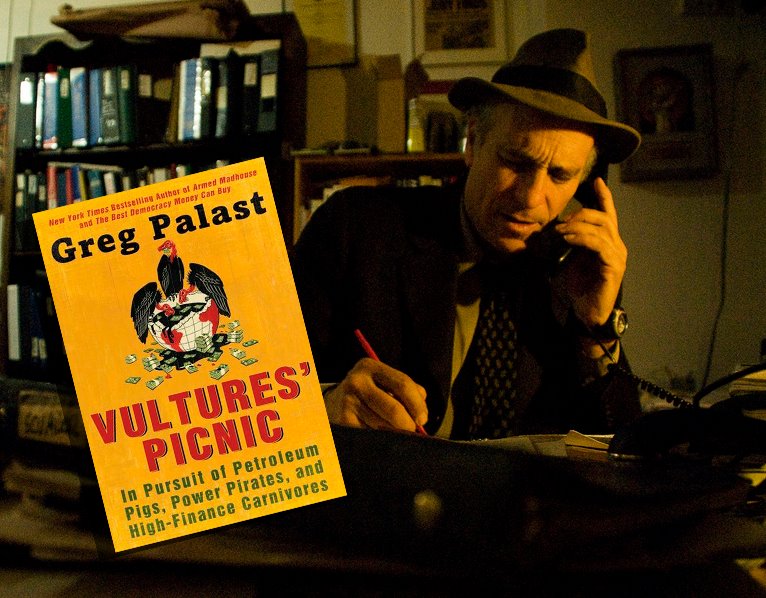Monday, August 28. From New Orleans.
DON'T blame the Lady. Katrina killed no one in this town. In fact, Katrina missed the city completely, going wide to the east.
It wasn't the hurricane that drowned, suffocated, de-hydrated and starved 1,500 people that week. The killing was done by a deadly duo: a failed emergency evacuation plan combined with faulty levees. Behind these twin failures lies a tale of cronyism, profiteering and willful incompetence that takes us right to the steps of the White House.
Van Heerden isn't the typical whistleblower I usually deal with. This is no minor player. He's the Deputy Director of the Louisiana State University Hurricane Center. He's the top banana in the field -- no one knew more about how to save New Orleans from a hurricane's devastation. And no one was a bigger target of an official and corporate campaign to bury the information.
Here's what happened. Right after Katrina swamped the city, I called Washington to get a copy of the evacuation plan.
Funny thing about the murderously failed plan for the evacuation of New Orleans: no one can find it. That's right. It's missing. Maybe it got wet and sank in the flood. Whatever: no one can find it.
That's real bad. Here's the key thing about a successful emergency evacuation plan: you have to have copies of it. Lots of copies -- in fire houses and in hospitals and in the hands of every first responder. Secret evacuation plans don't work.
I know, I worked on the hurricane evacuation plan for Long Island New York, an elaborate multi-volume dossier.
Specifically, I'm talking about the plan that was written, or supposed to have been written two years ago by a company called, "Innovative Emergency Management."
Weird thing about IEM, their founder Madhu Beriwal, had no known experience in hurricane evacuations. She did, however, have a lot of experience in donating to Republicans.
IEM and FEMA did begin a draft of a plan. The plan was that, when a hurricane hit, everyone in the Crescent City would simply get the hell out in their cars. Apparently, the IEM/FEMA crew didn't know that 127,000 people in the city didn't have cars. But Dr. van Heerden knew that. It was his calculation. LSU knew where these no-car people were -- they mapped it -- and how to get them out.
Dr. van Heerden offered this life-saving info to FEMA. They wouldn't touch it. Then, a state official told him to shut up, back off or there would be consequences for van Heerden's position. This official now works for IEM.
So I asked him what happened as a result of making no plans for those without wheels, a lot of them elderly and most of them poor.
"Fifteen-hundred of them drowned. That's the bottom line." The professor, who'd been talking to me in technicalities, changed to a somber tone. "They're still finding corpses."
(Note: You can view every article as one long page if you sign up as an Advocate Member, or higher).





